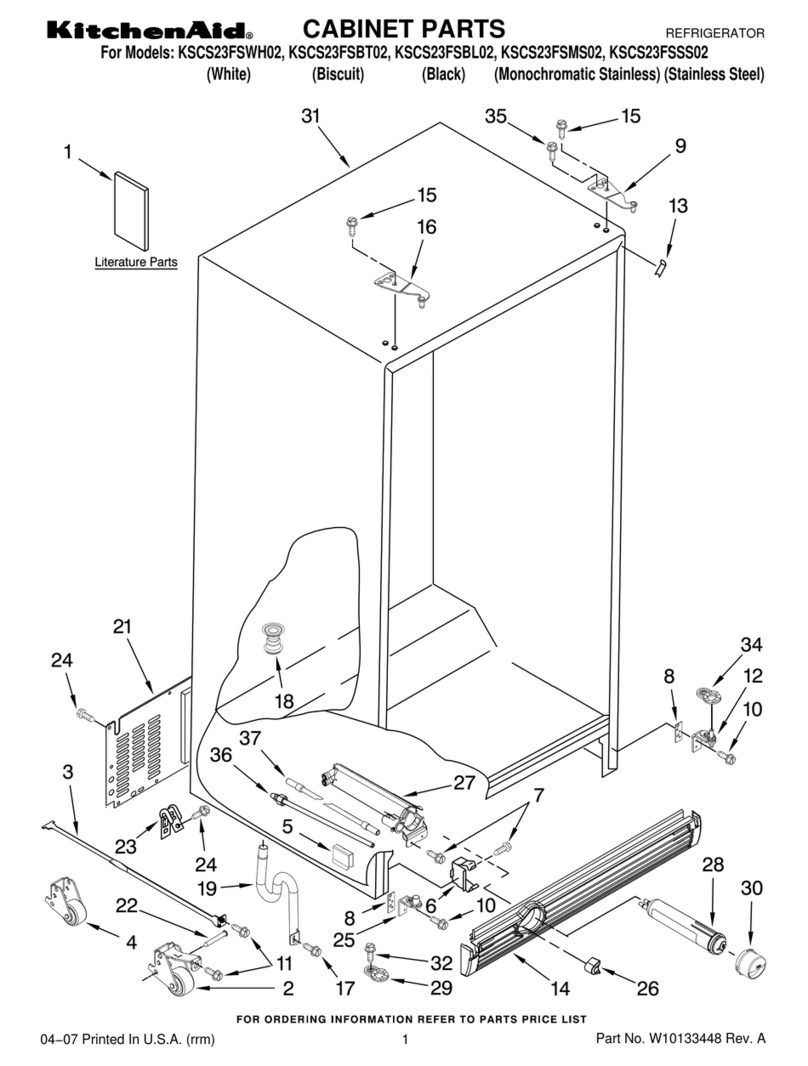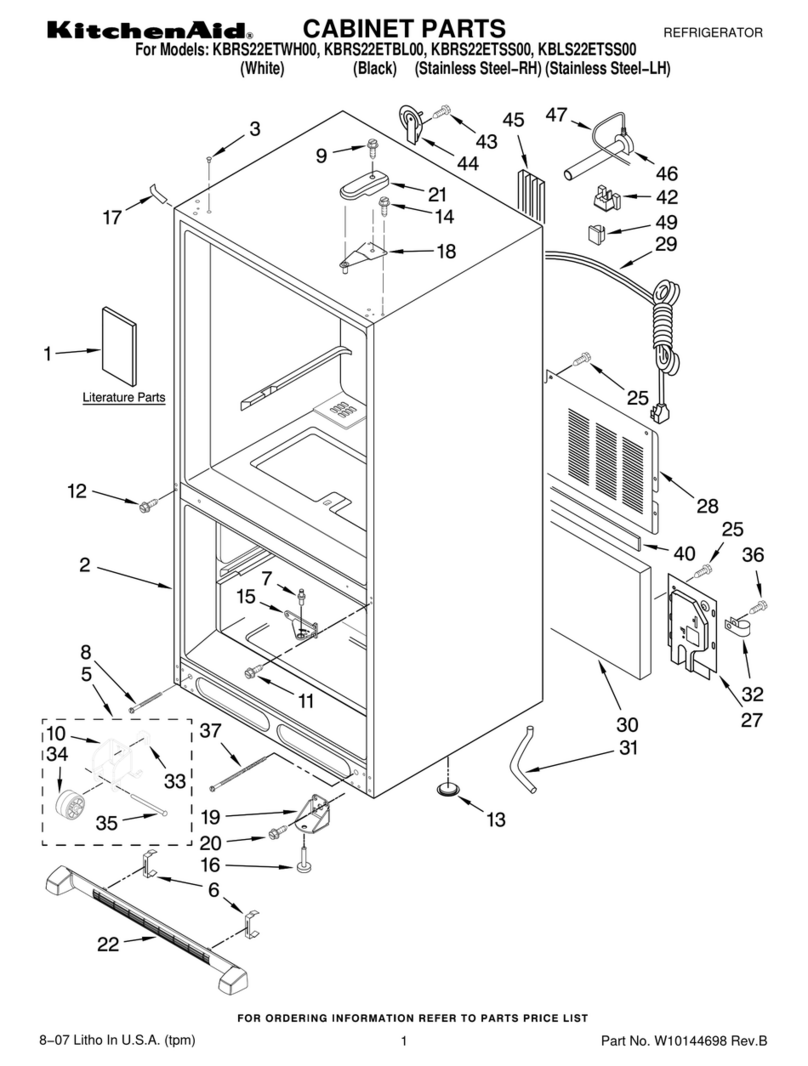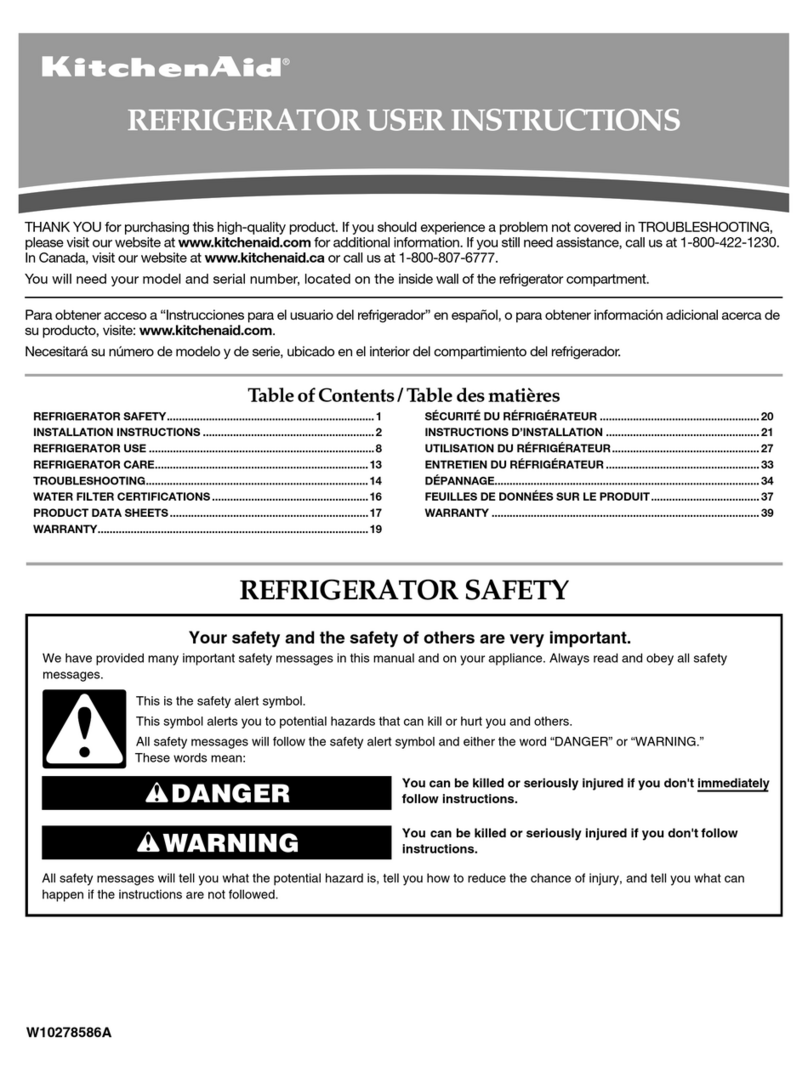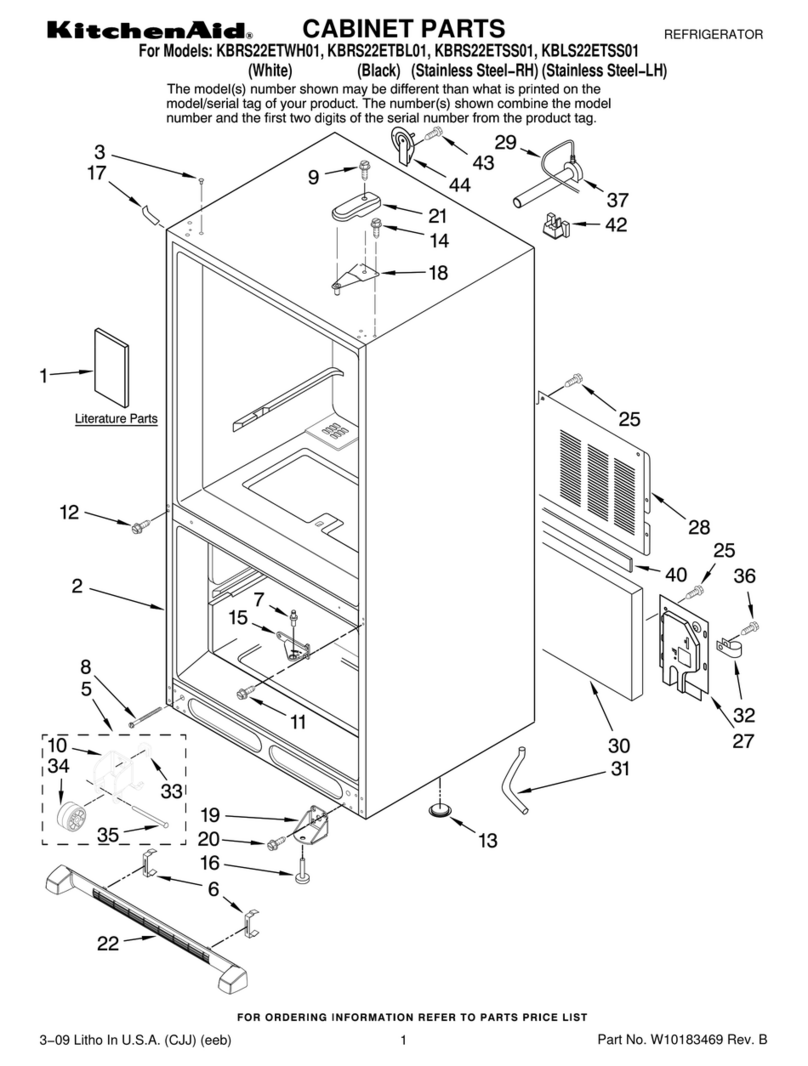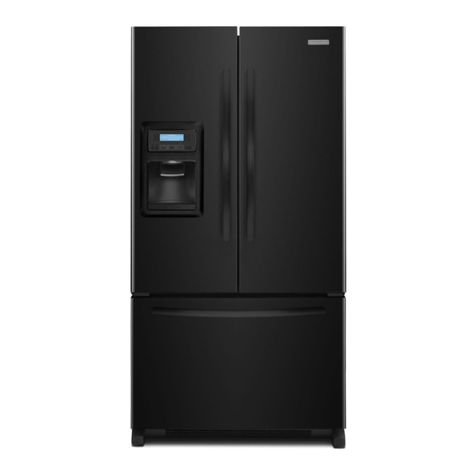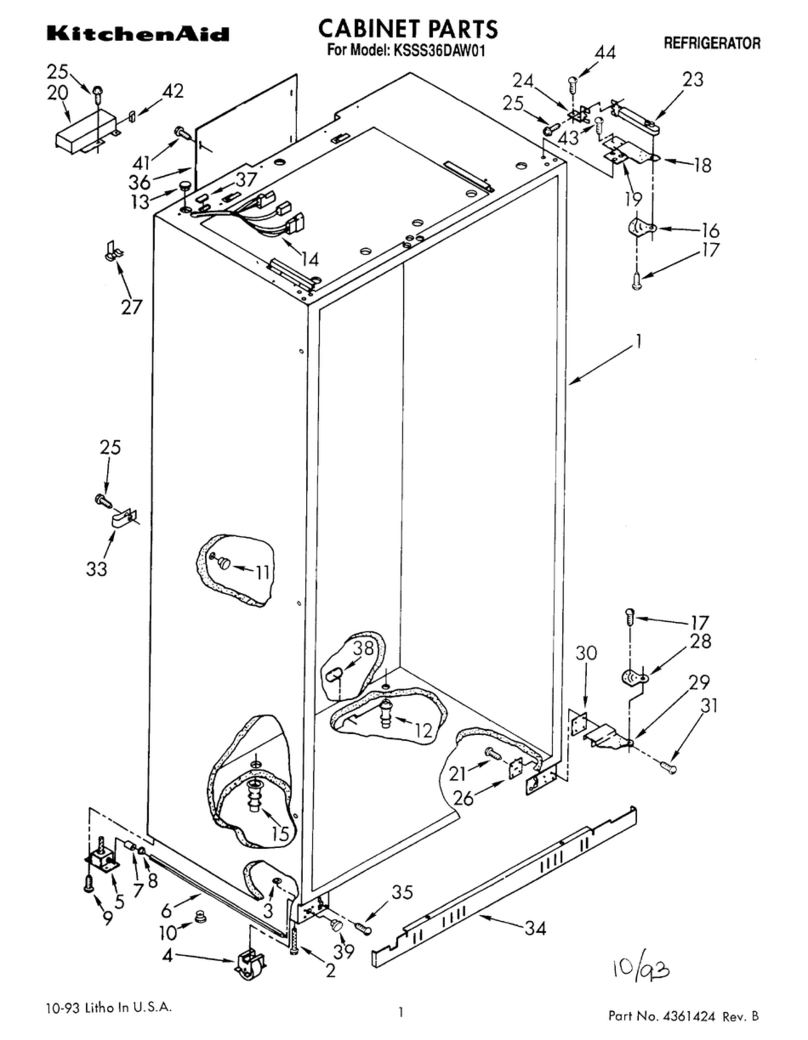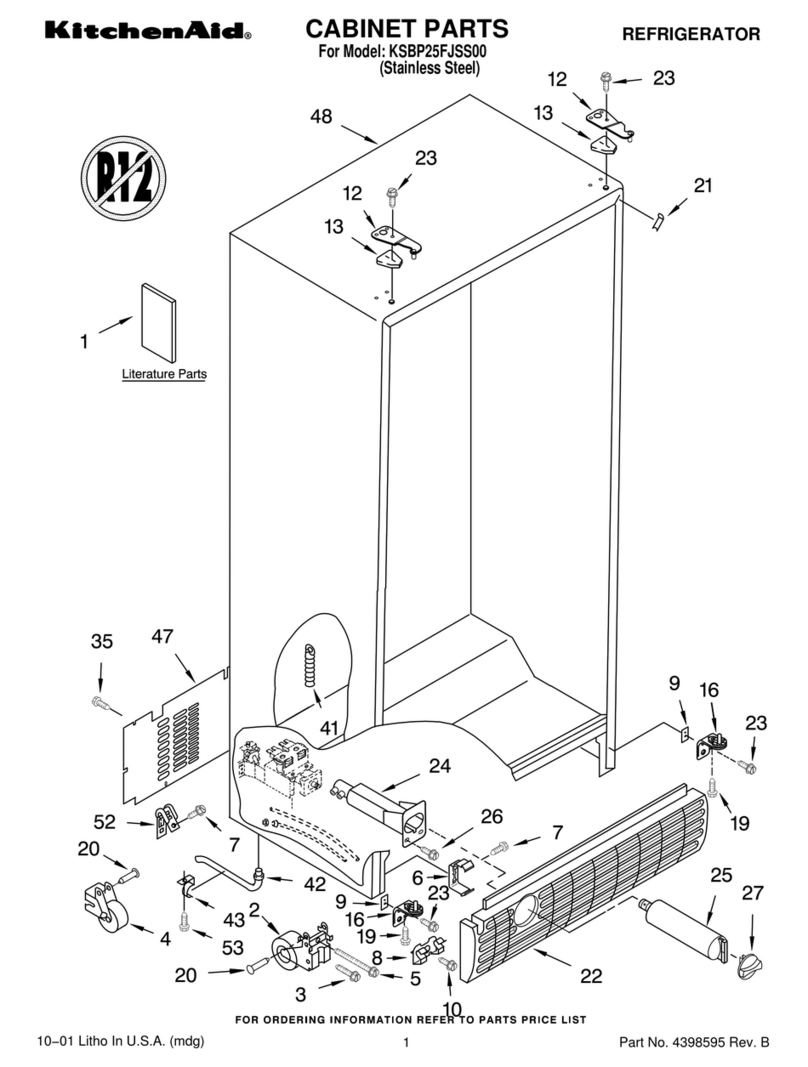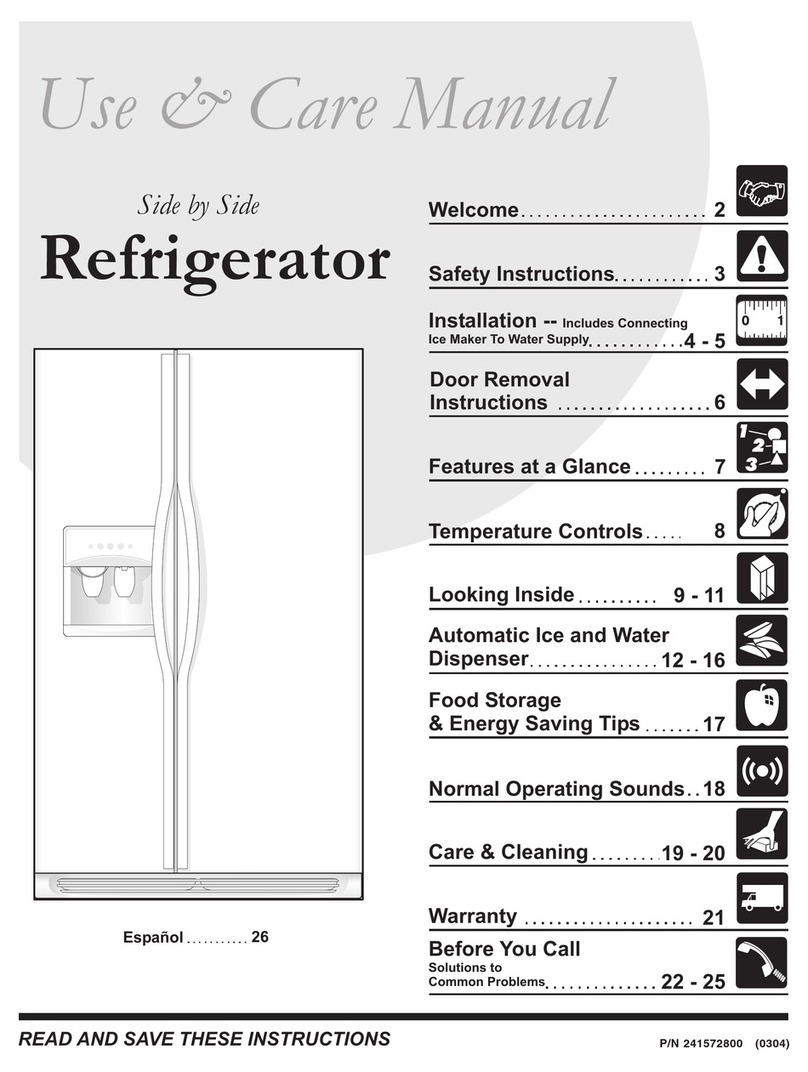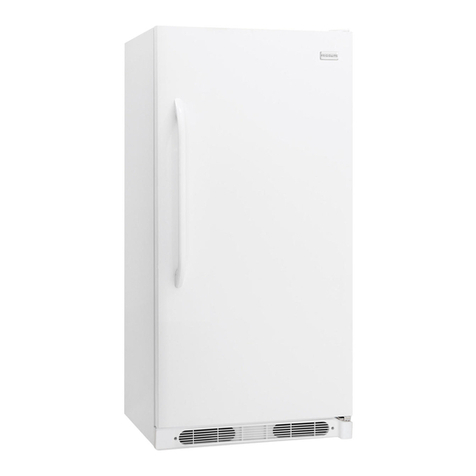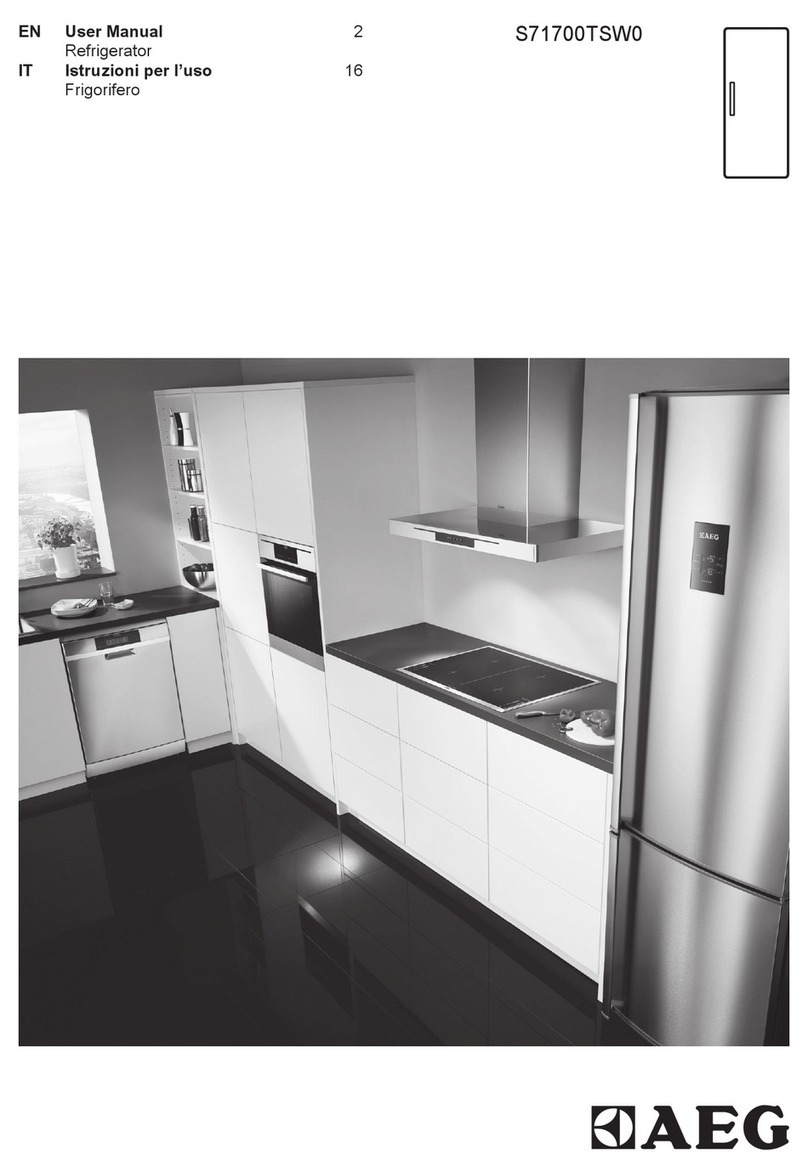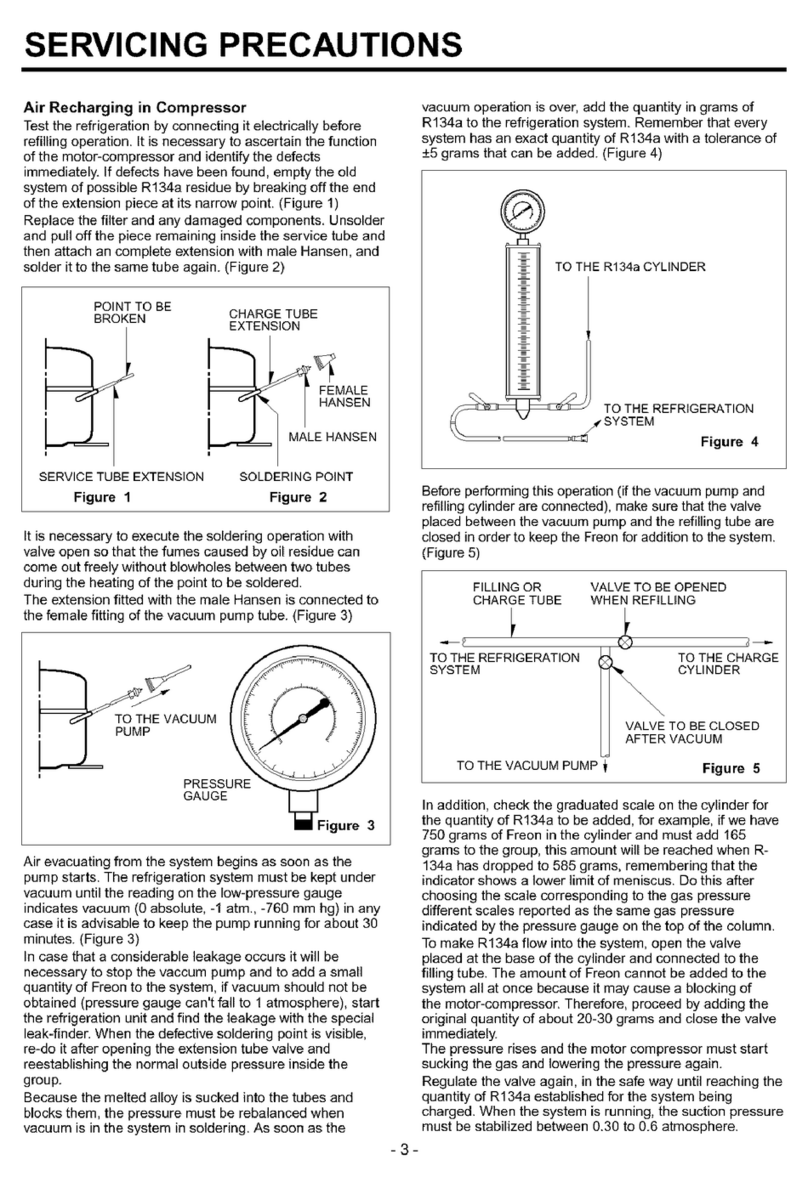
TABLEOF CONTENTS
REFRIGERATOR SAFETY ............................................................. 3
INSTALLATION INSTRUCTIONS .................................................. 4
Unpack the Refrigerator............................................................... 4
Location Requirements ................................................................ 4
Electrical Requirements ............................................................... 5
Water Supply Requirements ........................................................ 5
Connect the Water Supply ........................................................... 5
Base Grille.................................................................................... 7
Refrigerator Doors ........................................................................ 7
Freezer Drawer ............................................................................. 8
Adjust the Door .......................................................................... 10
Water System Preparation......................................................... 10
Normal Sounds .......................................................................... 11
REFRIGERATOR USE .................................................................. 11
Opening and Closing Doors ....................................................... 11
Ensuring Proper Air Circulation .................................................. 11
Using the Controls ..................................................................... 11
Water Dispenser ......................................................................... 13
Water FilterStatus Light............................................................. 13
Water Filtration System .............................................................. 14
Ice Maker .................................................................................... 14
REFRIGERATOR FEATURES ...................................................... 14
Refrigerator Shelves ................................................................... 14
Crisper and Crisper Cover ......................................................... 15
Crisper Humidity Control ............................................................ 15
Temperature-Controlled Drawer ................................................ 15
Utility or Egg Bin......................................................................... 16
FREEZER FEATURES .................................................................. 16
Freezer Baskets .......................................................................... 16
DOOR FEATURES ........................................................................ 17
Door Retainer ............................................................................. 17
Door Bins .................................................................................... 17
Utility Compartment ................................................................... 17
REFRIGERATOR CARE ............................................................... 17
Cleaning ...................................................................................... 17
Changing the Light Bulb ............................................................. 18
Power Interruptions.................................................................... 18
Vacation and Moving Care ......................................................... 18
TROUBLESHOOTING .................................................................. 19
ASSISTANCE OR SERVICE ......................................................... 22
In the U.S.A ................................................................................ 22
In Canada ................................................................................... 22
Accessories ................................................................................ 22
WATER FILTER CERTIFICATIONS ............................................. 22
PRODUCT DATA SHEETS ........................................................... 23
WARRANTY .................................................................................. 24
TABLEDES MATIERES
SI_CURITI_ DU RI_FRIGI_RATEUR .............................................. 25
INSTRUCTIONS D'INSTALLATION ........................................... 26
Deballage du refrigerateur ......................................................... 26
Exigences d'emplacement ......................................................... 26
Specifications electriques .......................................................... 27
Specifications de I'alimentation en eau ..................................... 27
Raccordement de la canalisation d'eau .................................... 27
Grille de la base .......................................................................... 29
Portes du refrigerateur ............................................................... 29
Tiroir du congelateur .................................................................. 30
Ajustement de la porte ............................................................... 32
Preparation du systeme d'eau ................................................... 32
Sons normaux ............................................................................ 33
UTILISATION DU RI_FRIGI_RATEUR .......................................... 33
Ouverture et fermeture des portes ............................................ 33
Pour s'assurer d'une circulation d'air appropriee ..................... 33
Utilisation des commandes ........................................................ 34
Distributeur d'eau ....................................................................... 36
Temoin lumineux de I'etat du filtre & eau................................... 36
Systeme de filtration d'eau ....................................................... 36
Machine a gla£;ons ..................................................................... 37
CARACTI_RISTIQUES DU RI_FRIGI_RATEUR ........................... 37
Tablettes du refrigerateur ........................................................... 37
Bac &legumes et couvercle ....................................................... 38
Reglage de I'humidite dans le bac a legumes ........................... 38
Tiroiratemperature contr61ee.................................................... 38
Casier utilitaire ou oeufrier .......................................................... 39
CARACTI_RISTIQUES DU CONGI_LATEUR ............................... 39
Paniers de congelateur .............................................................. 39
CARACTI_RISTIQUES DE LA PORTE ......................................... 40
Dispositif de retenue de la porte ................................................ 40
Balconnets dans la porte ........................................................... 40
Compartiment utilitaire ............................................................... 40
ENTRETIEN DU RI_FRIGI_RATEUR ............................................ 40
Nettoyage ................................................................................... 40
Remplacement de I'ampoule d'eclairage .................................. 41
Pannes de courant ..................................................................... 41
Entretien avant les vacances ou Iors d'un demenagement .......42
DI_PAN NAGE................................................................................. 42
ASSISTANCE OU SERVICE ......................................................... 45
Accessoires ................................................................................ 45
FEUlLLES DE DONNI_ES SUR LE PRODUlT ............................. 46
GARANTIE ..................................................................................... 47
2

